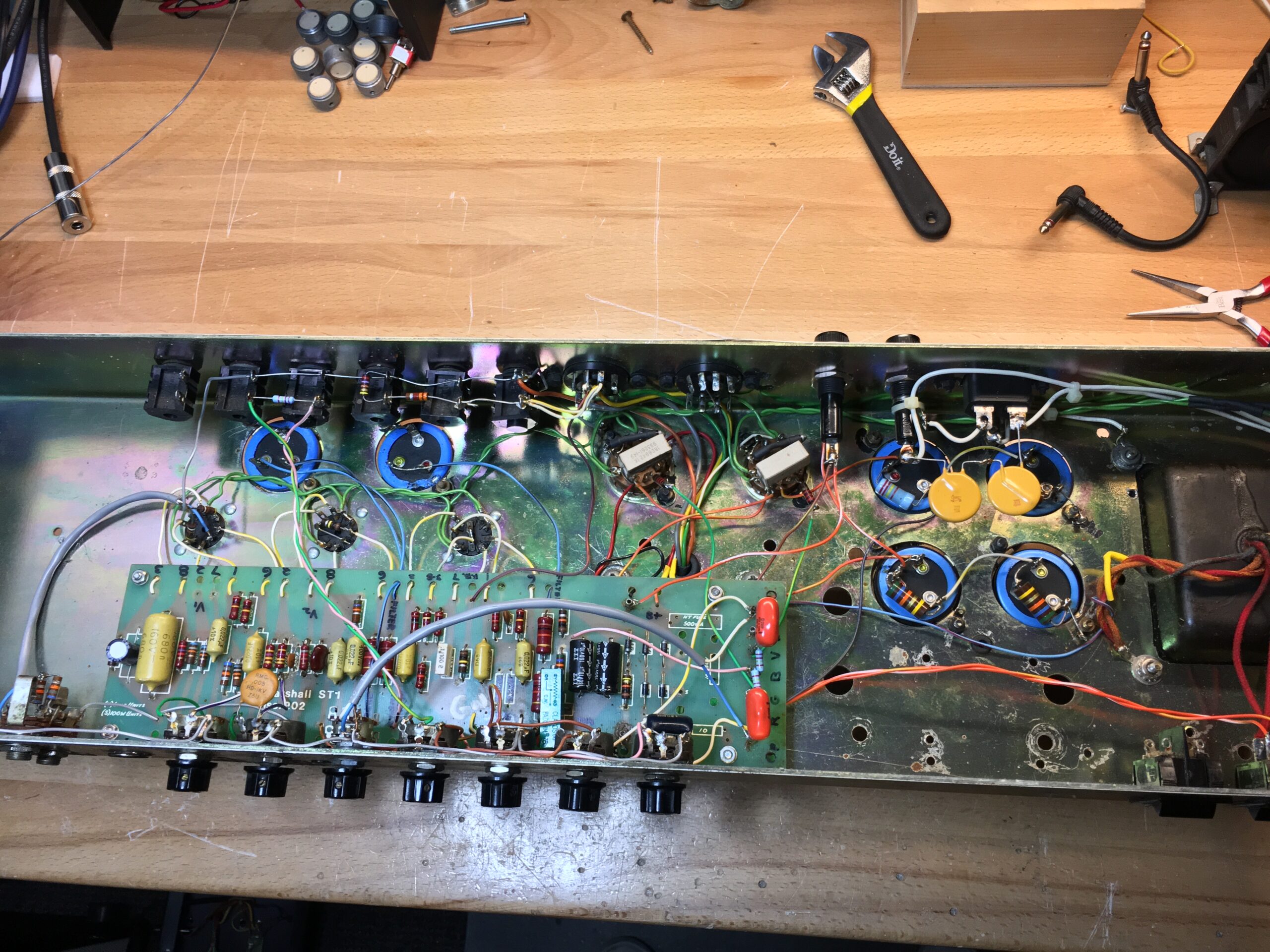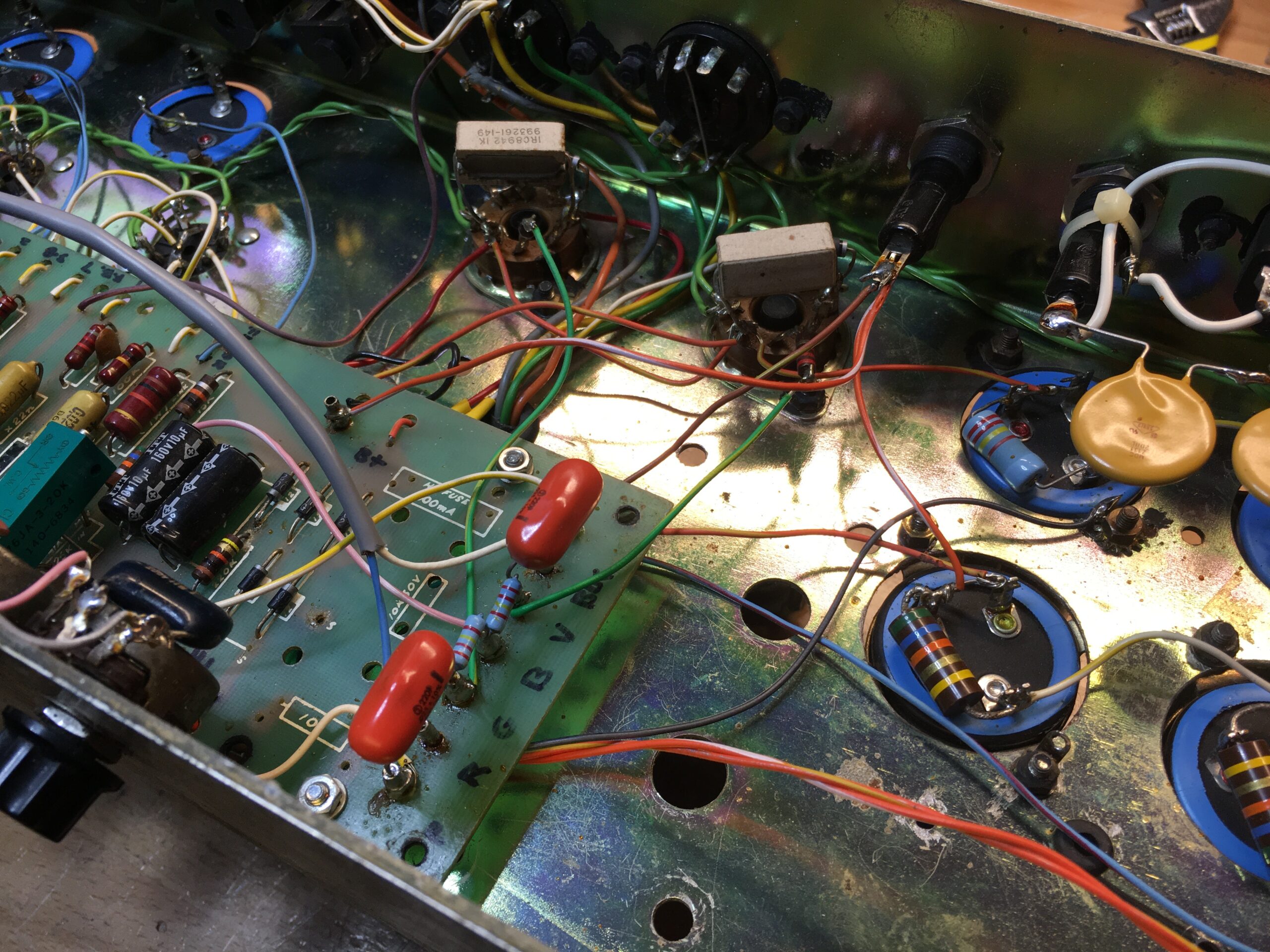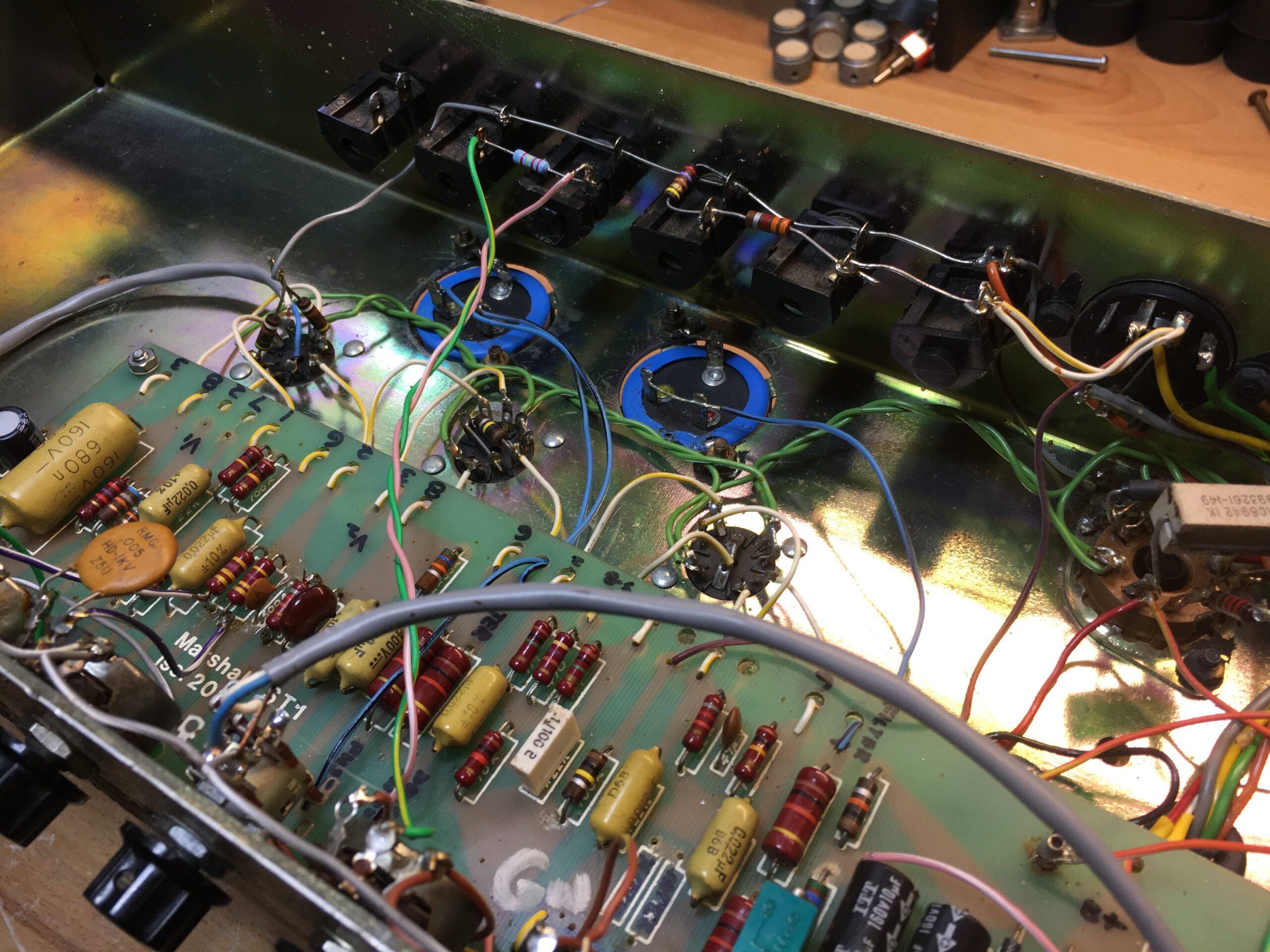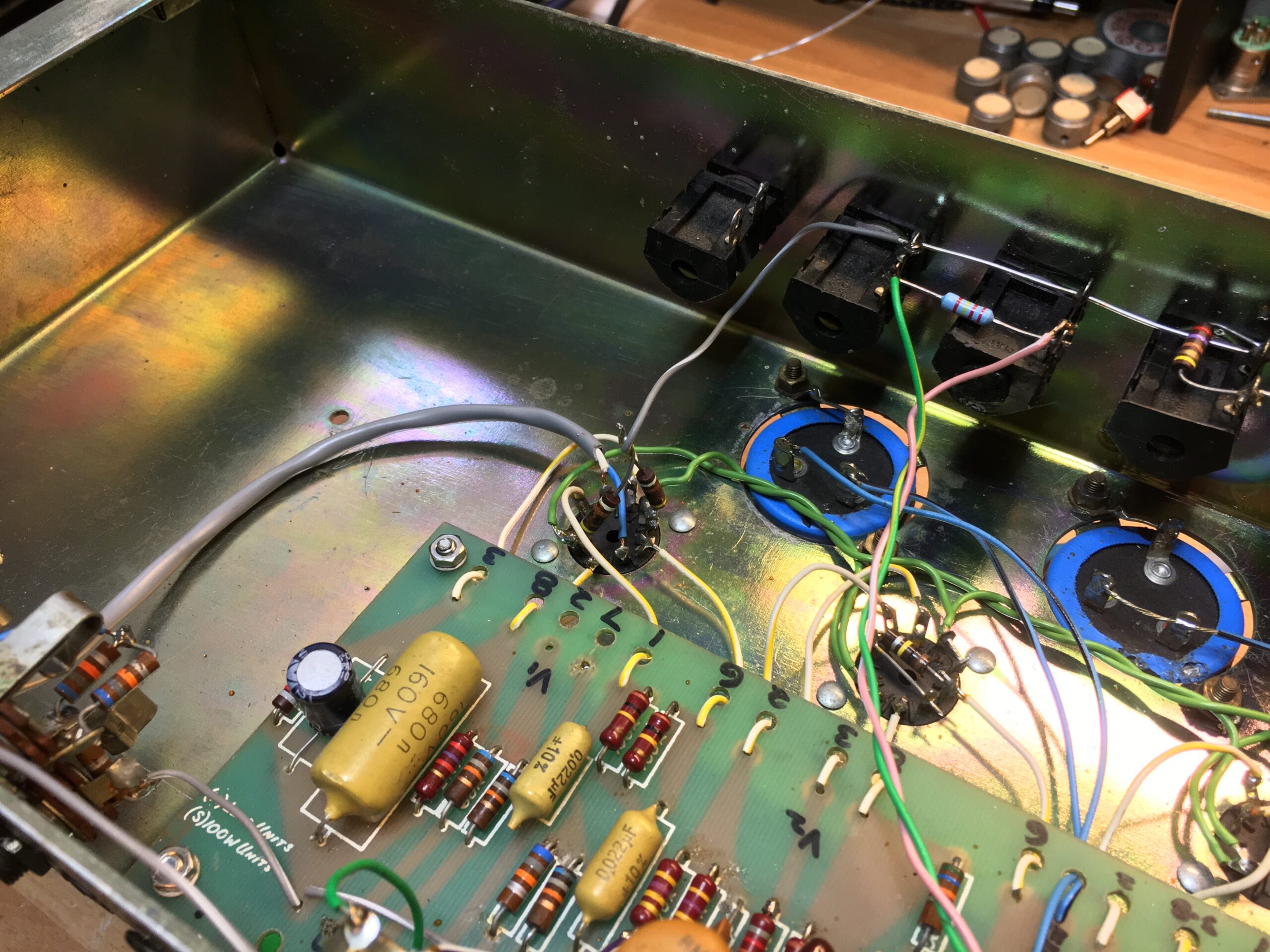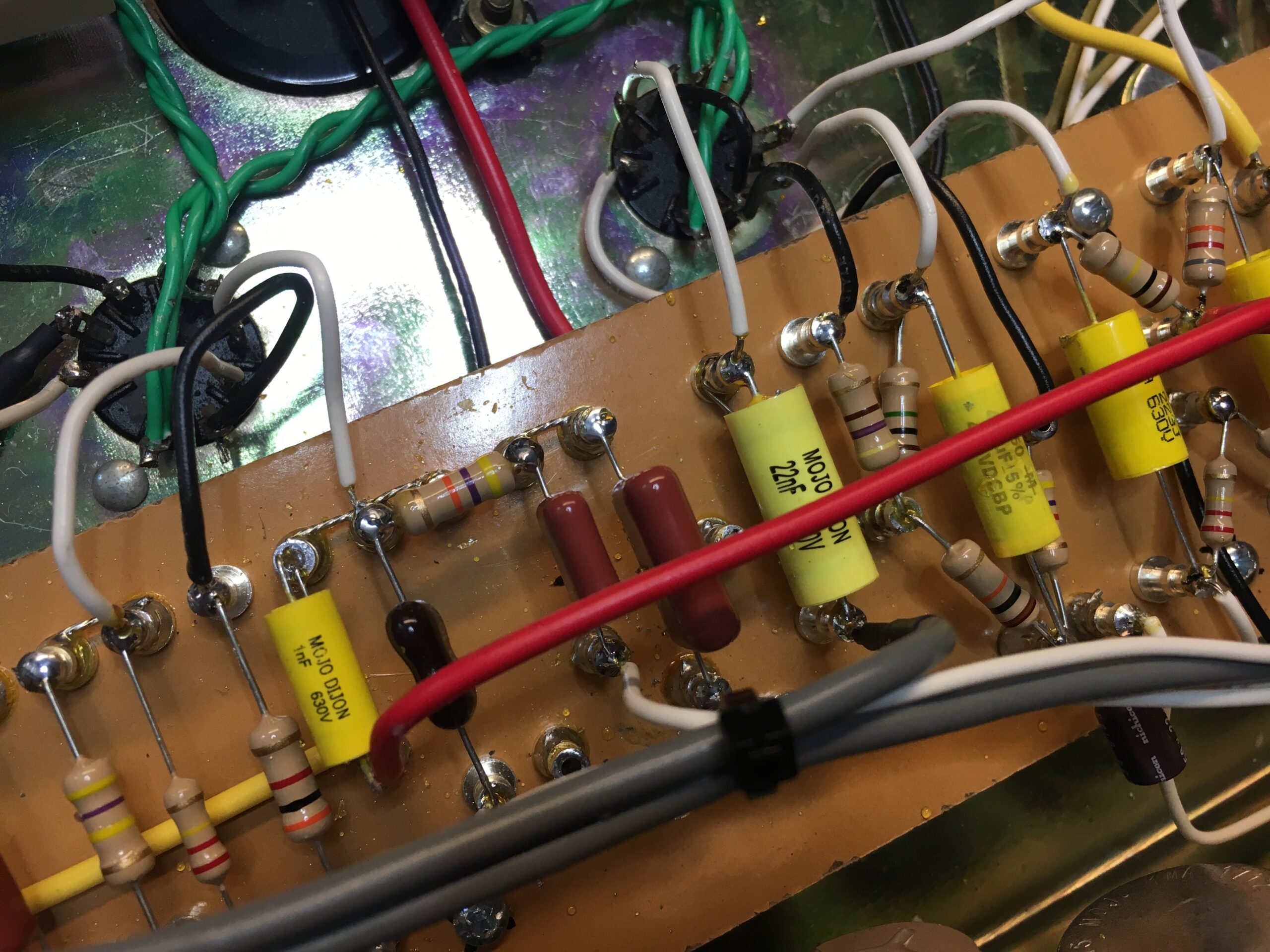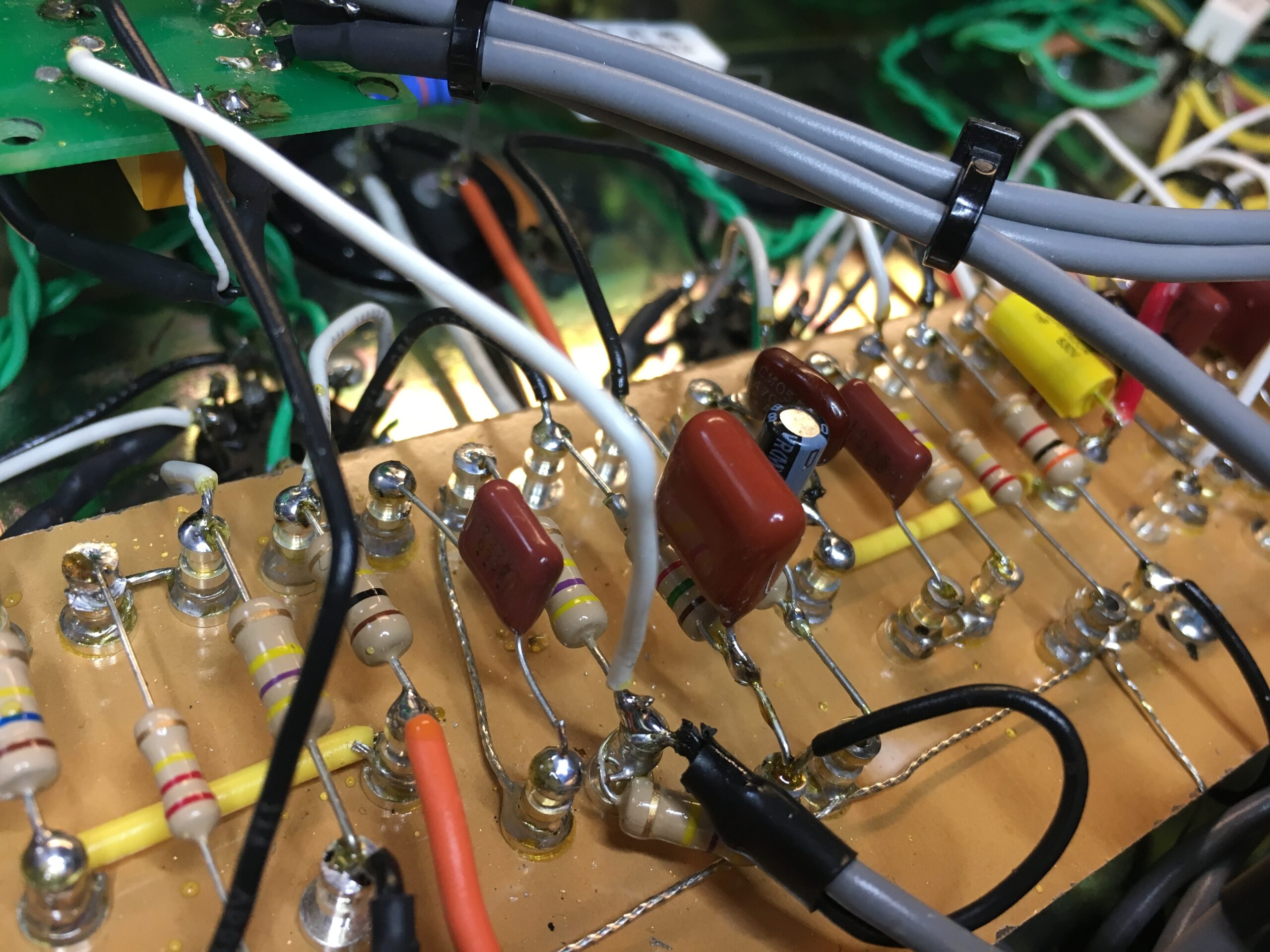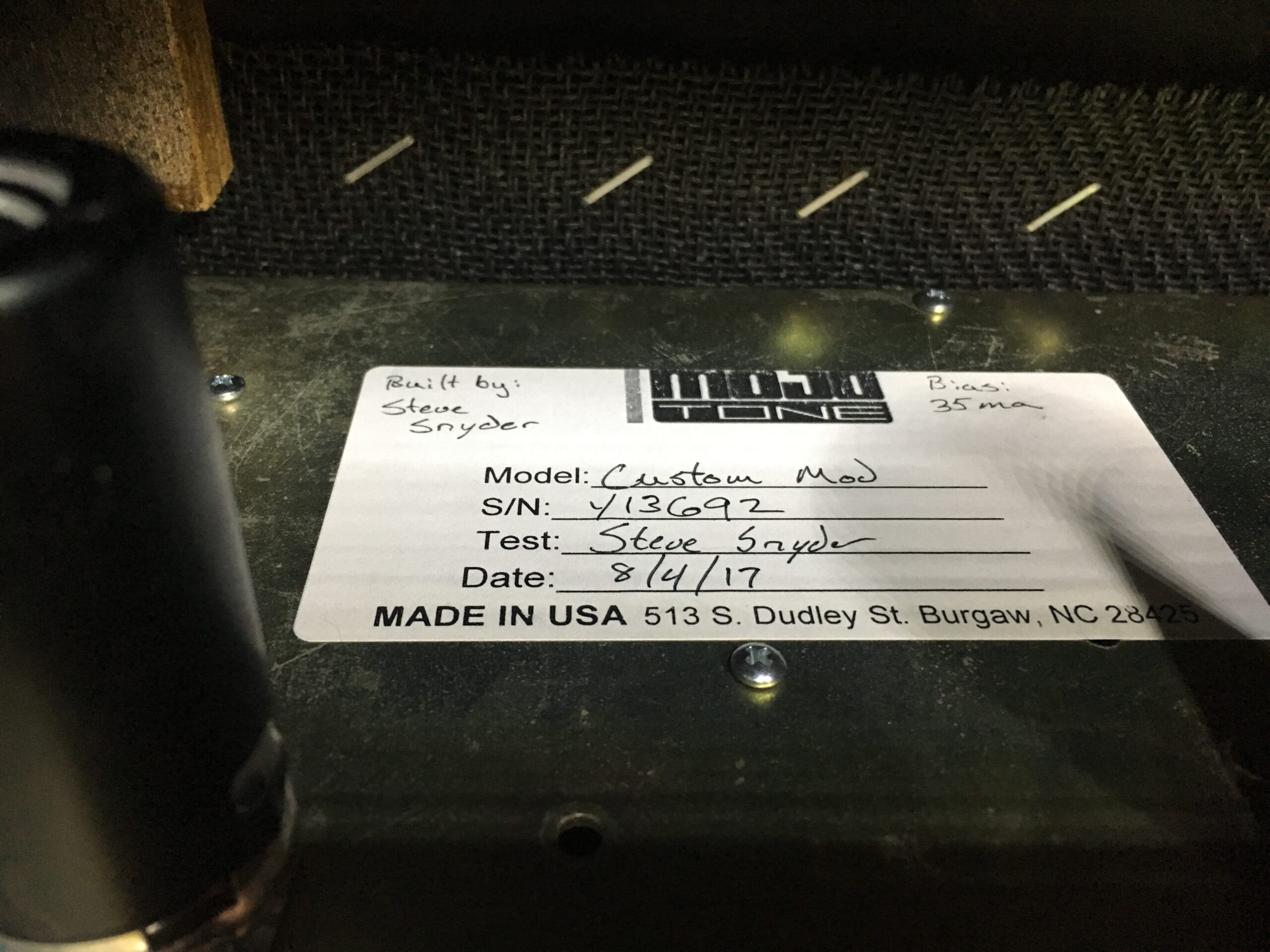In June of 2017, the band Shinedown was getting ready to go into the studio to record and wanted Mojo to go through about 8 or 10 of their amplifiers. It was a range of amps, from Fender to Marshall to a Diezel Herbert (which sounded insane!). AJ went through most of the amps, putting in fresh tubes, changing any capacitors that were close to failing, and performing any necessary cleanup.
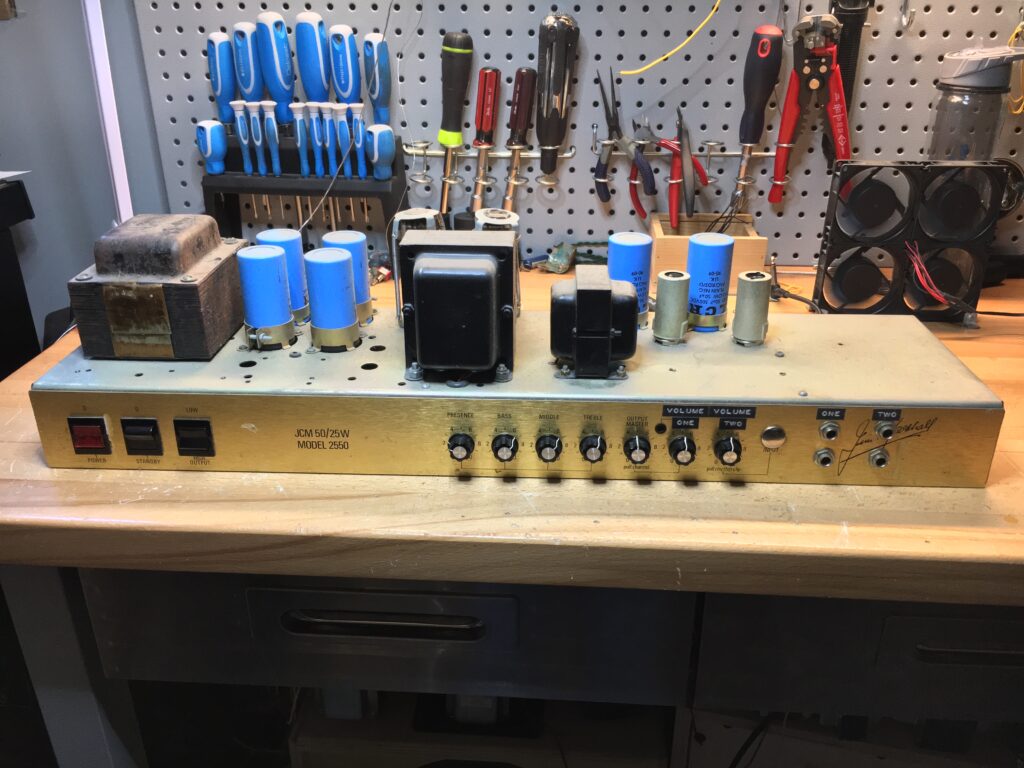
Hacked Marshall 2550 Gold Faceplate Version
There was one amplifier in the pile that they wanted to be rebuilt. The front panel had several holes drilled in it, the good ole embossing labels, and a random lay-down style power transformer that looked like it was from the 50s. Let’s just say it was a hack job. For whatever reason, someone decided to take the guts out of the 2550 (Silver Jubilee) and replace it with a hacked-up 1959 circuit board. All of the capacitors were changed to a much higher value in the power supply, and extra caps were added that would normally be in a 100W Marshall circuit. Looking further, the area where the current power transformer was hacked in used cloth-covered wire for the leads and showed some signs of rust. I was able to figure out from the date codes on the bell of the transformer that it came from a late 50s low-power Tweed Twin.
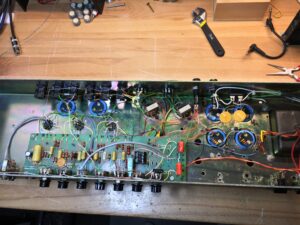
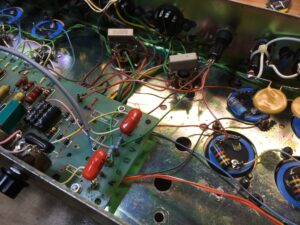
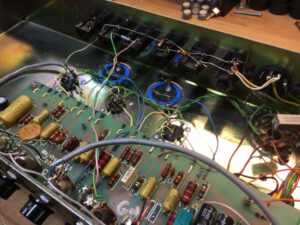
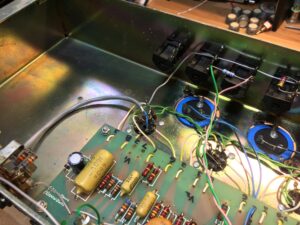
What to do with this mess?
This was quite the hack on a Marshall amp. From the looks of it, they were trying to make it a 1987/1959 circuit with a few “tweaks” on the circuit. The original power transformer was replaced by a sit-down style transformer, which was nowhere near original. The circuit board was a pull from another 1959 or JCM 800 amplifier with a whole lot of hacks done to it. Talking with the guys from Shinedown, they had plenty of Marshalls already and wanted a different-sounding amplifier, so I decided to go with something a little bit different and create a true two-channel amplifier. The clean channel was my design from the Mojotone Deacon clean channel, with a very simple volume and versatile tone control. For the lead channel, I decided to go with a modded version from the lead channel of a Mesa Mark II C+. Then for the power section, I decided to add a depth control and presence control.
A Fresh Start
I started by stripping out the old PCB and changing out any tube sockets that were damaged by the previous tech. Given the age of the power transformer and not wanting to risk if it had been damaged over the years, I decided to replace it with the same reproduction model from Heyboer/Mojotone. Next up was laying out a turret board for the preamp, phase inverter, and bias supply. Since the lead channel was a higher gain circuit, special care needed to be taken with the layout and lead dress. For the lead channel, I did some calculations of what most players ran the tone stack at when running higher gain, then voiced it around those settings, moving the tone stack to the last gain stage. One thing I made sure of was to dial back the bass content on both channels, allowing the depth control in the output section to be the final voicing of the amp.
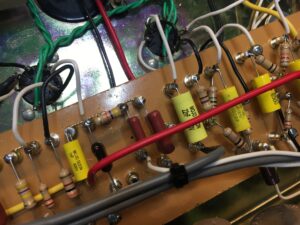
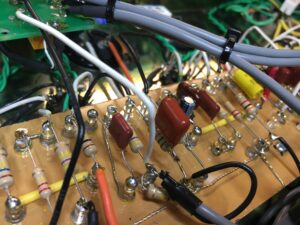
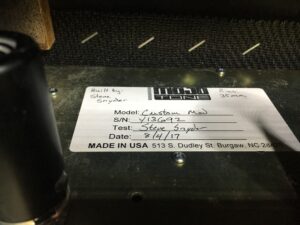
Circuit Tweaks
Originally, I had the idea of using the tone stack from the Silver Jubilee circuit for the lead channel. After play-testing the amp with that tone stack, I decided to go with a more traditional style Marshall tone stack. The Jubilee tone stack was very lower-mid forward sounding, giving the channel a “honky” sound and not the focused chug that I was looking for. I also tweaked the voicing of the first gain stage a little further to help tighten up the bass so you didn’t have to rely on the old “put a tube screamer in front of the amp” trick. You could still do it for an added boost if you wanted to, but it wasn’t necessary.
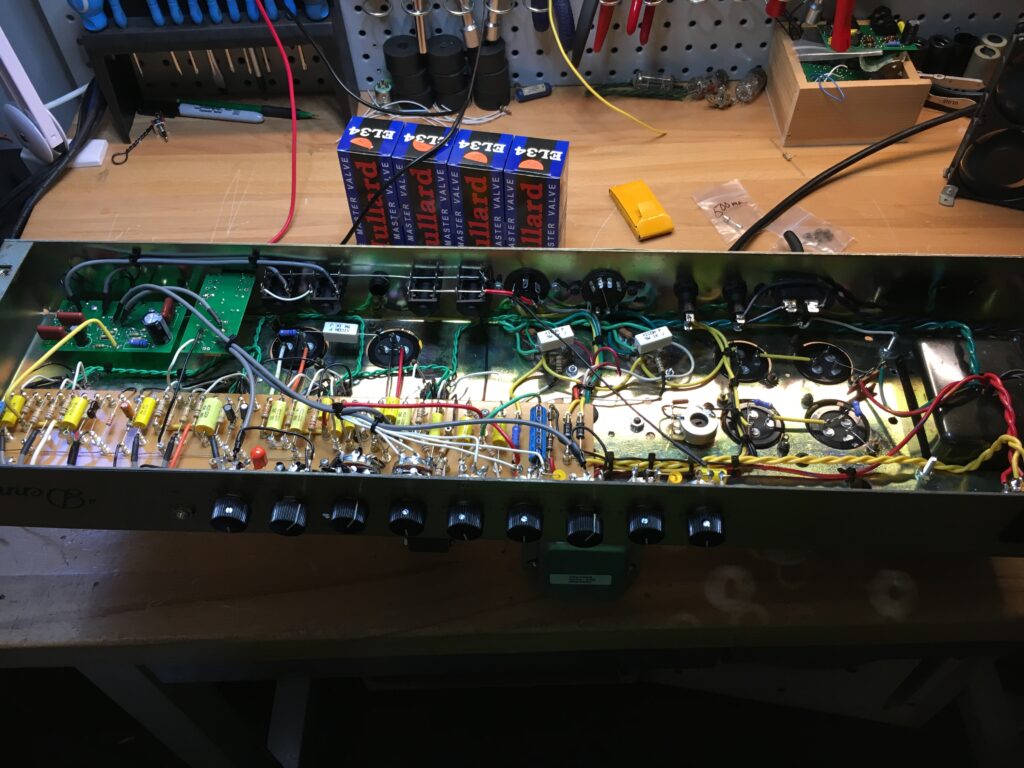
Final Additions
They requested to add an FX loop to the amp for using delays and reverbs for solos. I started with the Mojotone effects loop and then further tweaked it for unity gain as well as reducing hiss/noise. The loop uses two LND150s running at high voltages for clarity and to handle large audio signal swings from the preamp. The tweaks that I made for the loop on this build, as well as some further revisions, I later used to design my own effects loops for repairs and builds.
The Amp Called “Dennis”
After the amp build was completed, they requested that the amp be given the name Dennis. I don’t recall the reason for this name, but a new Marshall gold-style faceplate was created with the name on it. The amp was put through the ringer at Mojotone before sending it out. The amplifier now lives at Shinedown’s studio and has been on several of the last records to come out of there.
